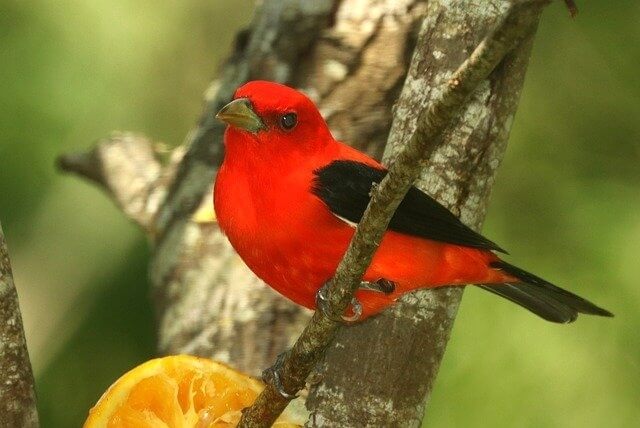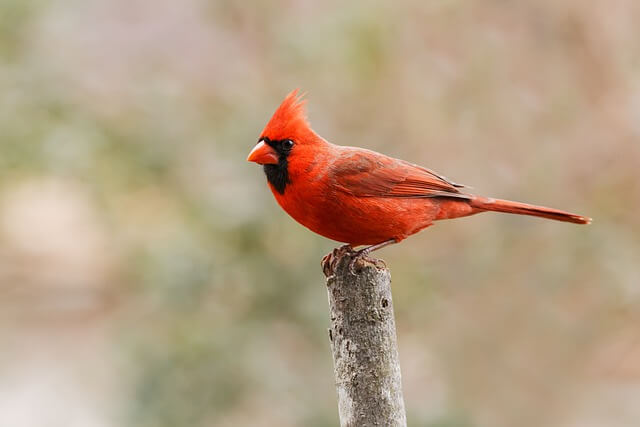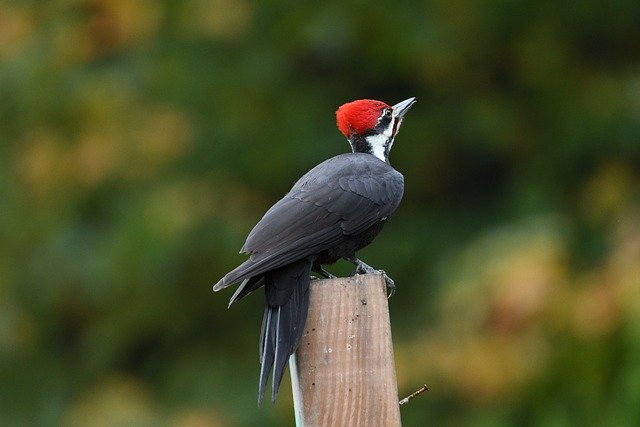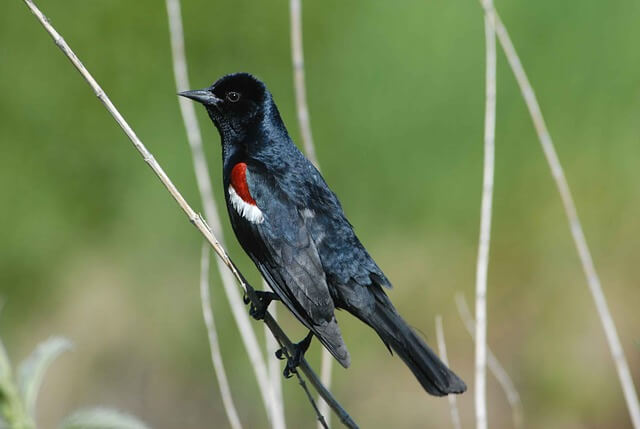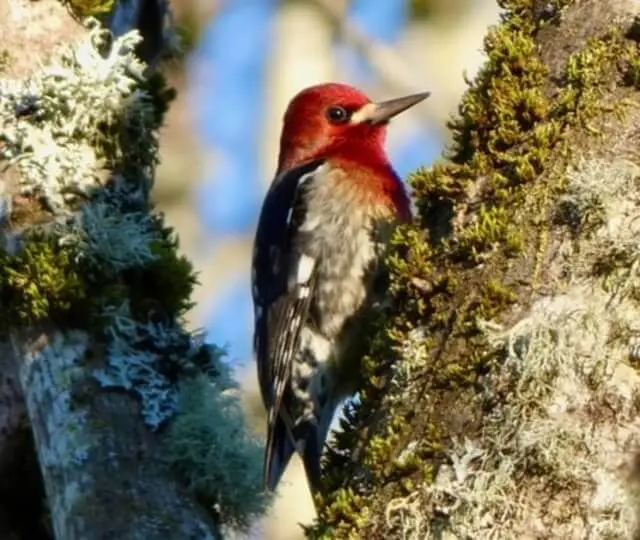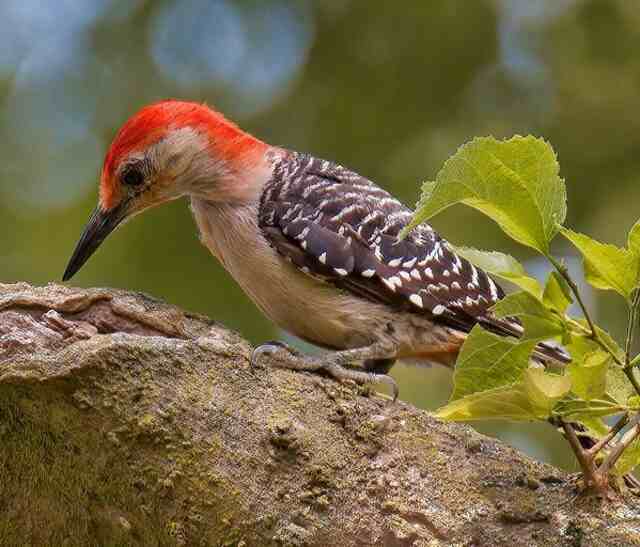Birds come in all shapes, sizes, and colors, but few are as striking as those that are red and black. These birds are known for their bold and eye-catching plumage, which makes them a popular sight for birdwatchers and nature enthusiasts.
From the iconic Northern Cardinal to the lesser-known Scarlet Tanager, there are many different species of birds that sport this distinctive color combination.
In this article, we will explore some of the most fascinating and beautiful birds that are red and black, and learn more about their behavior, habitats, and unique characteristics.
Table of Contents
- 1 Birds That Are Red And Black
- 2 FAQs: Birds That Are Red And Black
- 2.1 What kind of bird is red and black?
- 2.2 What is a black bird with red on it called?
- 2.3 Is it rare to see a Scarlet Tanager?
- 2.4 What bird is red with a black face?
- 2.5 What is the red bird in Canada?
- 2.6 What small bird is black, white, and red?
- 2.7 What bird has a black head and red stripe?
- 2.8 What does it mean to see a Red-winged Blackbird?
- 3 Conclusion
- 4 Author
Birds That Are Red And Black
Scarlet Tanager
The Scarlet Tanager is a medium-sized bird native to North America. This bird has a fire red plumage with black wings and a bill that is bone-white. It was named for its intense coloration, which looks like it has been colored in with red paint or dye.
They are most often found in the eastern United States but also range as far west as Colorado and New Mexico. These birds typically live in deciduous forests that have oak trees or large wooded areas near water sources such as rivers, streams, ponds, or lakes.
The Scarlet Tanager has a distinctive song that consists of a series of whistles or trills which have been described as sounding like “pretty, tinkling bells.” The sound makes this colorful bird easy to identify for bird watchers.
Vermilion Flycatcher
The Vermilion Flycatcher is a tyrant flycatcher in the family Tyrannidae. The species has a vibrant red plumage with black wings and tail, black bill, and dark legs.
Vermilion Flycatchers can be found in forests and shrublands throughout most of the eastern United States, from Maine to Florida and westward as far as Texas, Missouri, Nebraska, Oklahoma, and Arkansas
Their range includes some areas outside the U.S., such as Mexico’s Yucatan Peninsula. They forage by perching on an open branch or low tree limbs to watch for insects.
In the wild, these birds eat insects such as spiders, ants, beetles, flies, and caterpillars which they find on leaves or branches of trees. They are very agile in the air and will swoop down to catch insects on the ground. The male will usually make more displays than the female during courtship season.
Northern Cardinal
A Northern Cardinal is a small bird, measuring around 9 inches long. They are known for their beautiful bright red feathers and their unique crest on the head that can be seen from above.
The male has a black mask over his face, while the female does not have this marking. The Northern Cardinal lives in North America, living as far north as Canada and south to Mexico.
This bird usually lives in deciduous forests, but can also be found in parks and gardens, as well as open woodlands or thickets. It prefers to nest near streams or creeks in tall trees or bushes, often near water.
Northern Cardinals are very social birds, and the male and female usually travel together during migration.
Pileated Woodpecker
The Pileated Woodpecker is the largest of all North American woodpeckers. The male and female both are black with red markings on their heads and necks.
Their bill can be up to three inches long, which helps them in obtaining food from deep holes in trees. This bird’s diet consists primarily of ants, beetle larvae, bees, wasps, and yellow jackets, and other insects.
The size of its bill allows it to access a wider variety of food sources than most other birds. It also has a very large head that accounts for about 20% of its total body length!
The pileated woodpeckers’ habitat is usually in deciduous forests with mature trees or mixed pine-oak forests near water sources.
Tricolored Blackbird
The Tricolored Blackbird is a passerine bird of the coastal areas of the Pacific coast of North America. It has a shiny black plumage with a red shoulder patch that has a fine white border.
The species ranges from British Columbia, Canada, to Baja California in Mexico. This common species forages on or near water as well as on land, eating mostly insects and spiders, with some berries and seeds thrown in now and then.
as a shiny black plumage with a red shoulder patch that has a fine white border. These birds are quite active and can be seen in groups flying about or feeding on small insects along the water’s edge.
They will often roost communally at night, nesting mainly in cavities such as those created by tree trunks rotting at the base, or occasionally constructing their own.
Red-winged Blackbird
The Red-winged Blackbird is a species of bird in the Icteridae family native to North America. They have glossy black feathers with red and yellow on their wings, and can be found from the East Coast, west of the Appalachian Mountains, to the Great Plains and as far north as Alaska.
This species breeds mainly in marshes with dense stands of cattails or bulrushes in eastern Canada and the northern United States; more rarely, it may breed further south near large wetlands or along major rivers like the Mississippi River.
They are omnivores that eat seeds, grains, insects, and spiders as well as frogs and lizards when they have the opportunity to catch them.
They are typically found in wetland habitats, such as marshes, streamsides, riversides, ponds, and lakeshores. The birds migrate to Central America for the winter, where they nest near lakes or rivers.
Crimson-collared Tanager
The Crimson-collared Tanager is a small songbird from Mexico and Central America. Its length ranges between 9 inches to 10 inches and is mostly black with crimson red feathers around its collar, breast, and lower back and a black mask.
The female has more vibrant colors than the male in order to attract the male when the mating season comes around during spring. It is primarily found in the lowland forest understory, though it can also be seen in some open habitats such as mangroves.
It lives in the canopies of humid forests or dense brushy habitats with large trees, often near water sources such as rivers or streams, where it forages mainly on insects such crickets, grasshoppers, spiders, and beetles.
Masked Crimson Tanager
A masked crimson tanager is a small bird measuring 7″ inches in length that can be found in Central America, Costa Rica, Colombia, Ecuador, Panama, and Venezuela. . It has a unique black mask, wings, cloak, tail, and belly, and brilliant red in all the other areas.
The Masked Crimson Tanager has a large appetite for insects, so it often visits fruiting trees to eat berries or collect insects that are attracted to the tree’s sap.
It’s usually found at higher elevations, but occasionally can be seen at lower altitudes. They are highly active birds and are constantly on the move looking for food.
Red-breasted Sapsucker
The Red-breasted Sapsucker, a striking woodpecker, stands out with its red breast, contrasting with black wings and back, and distinctive facial markings. This bird thrives in coniferous and mixed forests, primarily in western North America, ranging from Alaska to Baja California and occasionally extending to the Rocky Mountains in the east.
Known for their unique feeding behavior, they create sapwells in tree bark to extract sap and insects, acting as ecosystem engineers that attract other birds and insects. Their diet includes sap, insects, and tree bark, with occasional fruit consumption during the breeding season. They communicate with characteristic “mewing” calls and various vocalizations.
These migratory birds often winter in southern parts of their range, sometimes joining mixed woodpecker flocks. With their distinctive appearance and feeding habits, Red-breasted Sapsuckers are captivating additions to North America’s avian diversity.
Red-bellied Woodpecker
The Red-bellied Woodpecker is a captivating bird known for its striking appearance. With a vibrant red crown and nape that sometimes overshadows its modest red belly, these woodpeckers create a lasting impression. Their zebra-striped back further adds to their distinctive look.
You can spot these adaptable birds in various environments, from dense forests to urban neighborhoods. They’re a common sight in eastern North America, spanning from southern Canada to the Gulf of Mexico. Their adaptability makes them frequent visitors to backyard feeders, where their vibrant presence often delights observers.
Red-bellied Woodpeckers are agile foragers, dining on insects, fruits, seeds, and tree sap. Their distinctive rolling “chur-chur-chur” call is often a giveaway of their presence. These year-round residents prefer nest cavities in dead trees, showcasing their remarkable behavior and appearance in many North American regions.
FAQs: Birds That Are Red And Black
What kind of bird is red and black?
There are several species of birds that are red and black, including the Northern Cardinal, Scarlet Tanager, Red-headed Woodpecker, and Red-winged Blackbird. The Northern Cardinal is a common bird found in North America, known for its bright red plumage and black mask. The Scarlet Tanager is a striking bird with a bright red body and black wings. The Red-headed Woodpecker has a red head, black body, and white wing patches. The Red-winged Blackbird has a black body and distinctive red and yellow shoulder patches.
What is a black bird with red on it called?
The most likely bird that fits this description is the Red-winged Blackbird. The male has a black body with red and yellow shoulder patches, while the female has a brownish-black body with a light stripe on the eyebrow and a reddish tinge on the wings.
Is it rare to see a Scarlet Tanager?
Scarlet Tanagers are not considered rare, but they can be difficult to spot due to their preference for the treetops and their tendency to stay hidden in the foliage. They are migratory birds that breed in the eastern United States and winter in South America.
What bird is red with a black face?
The Vermilion Flycatcher and the Northern Cardinal are birds with a bright red body and a black face.
What is the red bird in Canada?
The Northern Cardinal is a red bird that is commonly found in eastern Canada. It is a year-round resident of the southern part of the province of Ontario and parts of Quebec.
What small bird is black, white, and red?
The male Downy Woodpecker has a black and white body with a distinctive red patch on the back of its head. It is one of the smallest woodpeckers in North America and is found throughout the continent.
What bird has a black head and red stripe?
The Red-breasted Sapsucker is a woodpecker with a black head and a distinctive red stripe on its throat. It is found in western North America, from Alaska to Mexico.
What does it mean to see a Red-winged Blackbird?
In some cultures, seeing a Red-winged Blackbird Blackbird is believed to be a sign of good luck or a message of hope and joy. Red-winged Blackbirds are also considered to be a symbol of change and transformation. Spotting any bird in nature can be a reminder of the beauty and diversity of the natural world, and can also provide a sense of peace and connection to the environment.
Conclusion
In conclusion, birds that are red and black are some of the most fascinating and beautiful creatures in the avian world. From the iconic Northern Cardinal to the lesser-known Red-headed Woodpecker, these birds are known for their striking plumage and unique characteristics.
By learning more about these birds and their habitats, we can gain a deeper appreciation for the natural world and the diversity of life that surrounds us.
Whether you are a seasoned birdwatcher or simply an admirer of nature’s beauty, exploring the world of birds that are red and black is sure to be a rewarding experience.


